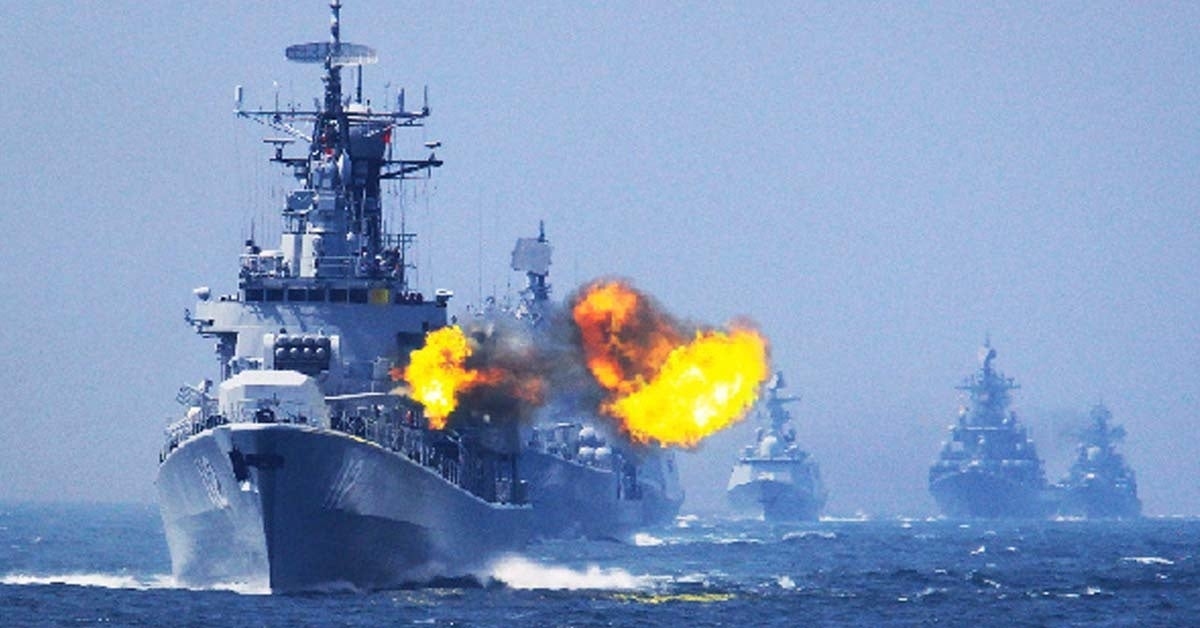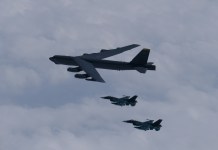At a time when the US shipyards are struggling to build new ships or even fully maintain or repair the ones they hold in inventory, two of the Chinese listed shipbuilders will merge to end the competition between them and serve the People’s Liberation Army (PLA) better. Their merger will create the world’s largest shipbuilder.
The impending merger will create a shipyard with combined annual sales of 122 billion yuan (US$17.1 billion/HK$133.1 billion), almost double the size of South Korea’s Hyundai Heavy Industries.
The merged entity would be capable of building various vessels, from warships like aircraft carriers to commercial ships like container carriers, huge crude carriers, and even passenger liners.
Two Chinese firms, China CSSC Holdings and China Shipbuilding Industry (CSICL), filed an intent to merge with the Shanghai Stock Exchange. Trading of their shares was suspended Tuesday to avoid irregular movements while they arrange the deal, with the halt expected to last no more than 10 trading days.
Both listed shipyards are subsidiaries of China State Shipbuilding Corp, and together, they have control over one-third of the global market shipbuilding orders.
China has been restructuring its shipbuilding industries. Earlier Beijing had consolidated the two state-controlled shipbuilders in 2019. Earlier these two shipbuilders were covering separate geographical regions.
They built hundreds of military vessels to modernize the Chinese Navy and built aircraft carriers, Type 055 destroyers, Type 076 amphibious assault ships, and Type 094A nuclear submarines.
“A consolidation will help optimize their business structure with strengthened capability to take orders for more advanced vessels,” Man Zaipeng, an analyst at Sinolink Securities, said in a note to clients. China’s increasing share of the global shipbuilding market “bodes well for earnings of the new entity,” he added.
The restructuring of the China State Shipbuilding Corps is to drive new growth. Presently, China is the world’s largest builder of merchant ships.
The Office of Naval Intelligence assessment noted that China has “dozens” of commercial shipyards larger and more productive than the largest U.S. shipyards, and an unclassified US Navy briefing slide suggested that China has 230 times the shipbuilding capacity of the United States.
Besides the raw numerical superiority, the PLA-Navy will surpass the US Navy in another critical measure of naval power: the total number of vertical launch system (VLS) cells and advanced missile launchers that determine a navy’s firepower. The US Navy currently has about 9,900 VLS cells on its surface combatants and submarines, while the PLAN only has about 4,200.
But the Chinese Navy is catching up fast. In 2004, the US warships had 222 times as many launchers as the Chinese Navy, and now it has fewer than three times. If the current progress continues, China will have more launchers than the US Navy by 2027.
Contrary to this, the US shipyard capacity is floundering. Given the current shipyard capacity, the US Navy is estimated to be 20 years behind in maintenance work.
American shipbuilding production has been at a historic low. US shipbuilding output has decreased by more than 85 percent since the 1950s, while the number of American shipyards capable of building large vessels has fallen by more than 80 percent.
American shipyards are suffering from a labor shortage. The US has gone from building 5 percent of the world’s ocean-going commercial ships in the 1970s to building about 0.2 percent today, as measured by gross tonnage. On the other hand, China, Japan, and South Korea now combine for more than 90 percent of global commercial shipbuilding.
The US Navy, the principal customer of the American shipyards, has increased its shipbuilding budget by 12.5 percent per year from fiscal year 2020 to fiscal year 2024. And its most recent 30-year plan calls for the construction of 290 to 340 new ships by 2053.
Beyond the domestic demand, the shipbuilders have to meet the needs of the AUKUS nuclear submarine partnership among the Australian, US, and UK defense agencies.
To meet this target, the US needs to revitalize its shipbuilding industry.
China’s other advantage is the relative age of the Chinese and the US warships. About 70 percent of Chinese warships were launched after 2010, whereas only about 25 percent of the US Navy’s were.

Reviving The US Shipbuilding Capability
China has the largest maritime fighting force, operating 234 warships to the US Navy’s 219. The vessel count of the Chinese Navy doesn’t include 80 missile-armed small patrol craft in the Chinese Coast Guard but is operated by the PLA-Navy.
History suggests that numerical superiority led to victories in war. More numbers suggest that China can absorb more losses than the US.
In one recent set of wargames, China lost 52 major surface warships in the invasion of Taiwan. Even after such catastrophic losses, China still had more surface warships than the United States and was able to continue the naval battle.
Unless the US takes immediate corrective measures to arrest its declining shipbuilding capabilities, the advantage China gains in the maritime domain will be irreversible. The US can invest in smaller surface vessels like corvettes, frigates, and unmanned naval systems. Experts suggest that the US needs to deepen its partnerships with Pacific countries like Japan and South Korea and invest in its domestic shipbuilding industry—particularly the highly specialized submarine industrial base.
The other route is to go into the war along with allies. If the Japanese Maritime Self-Defense Force, along with its 4 cruisers, 34 destroyers, 10 frigates, and 4 helicopter carriers, and the South Korean Navy with its 3 cruisers, 6 destroyers, 16 frigates, and 5 corvettes join the US Navy, the PLA-Navy will lose its numerical advantage.




